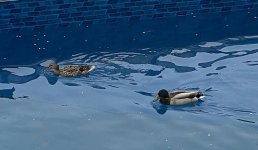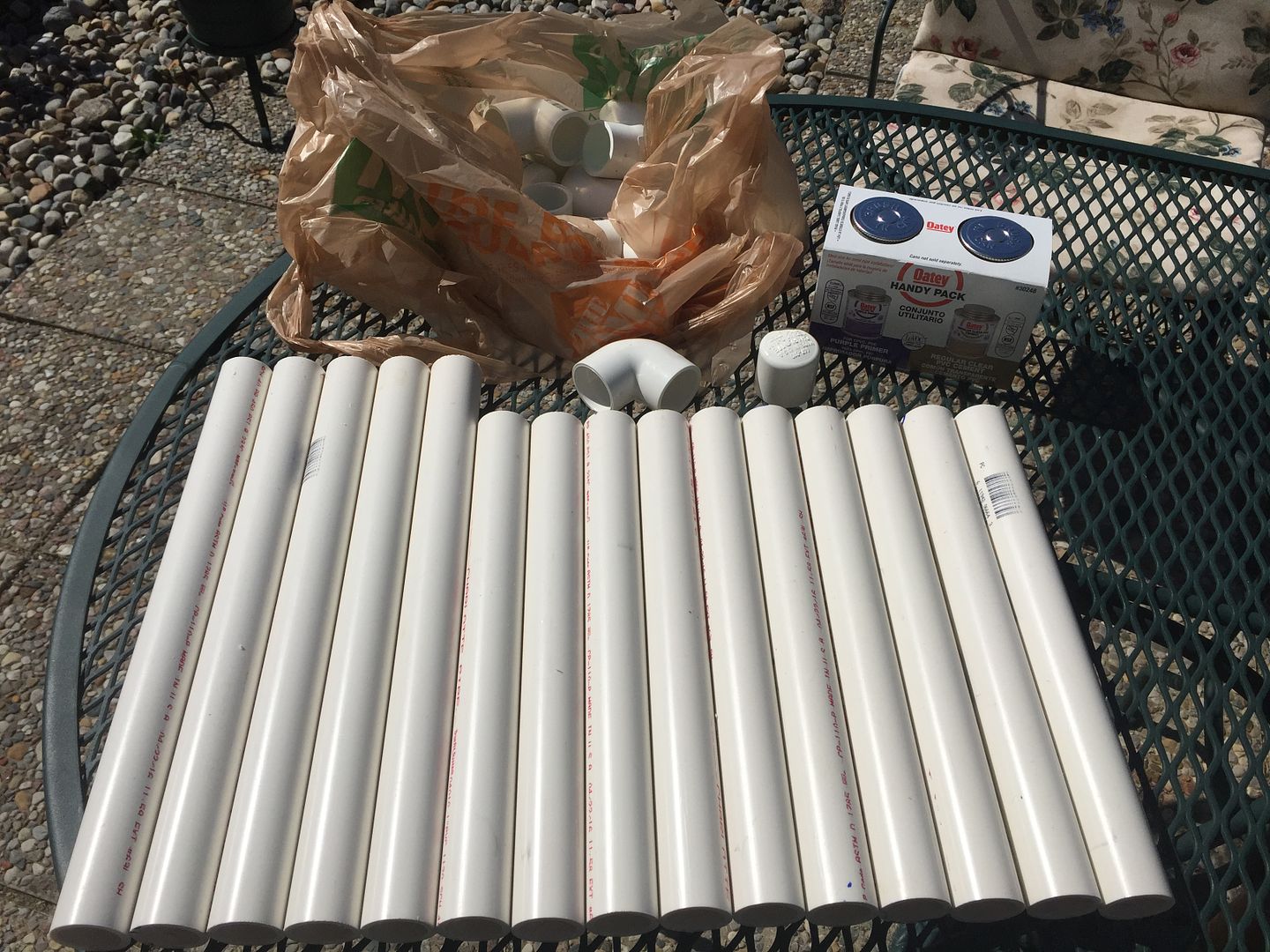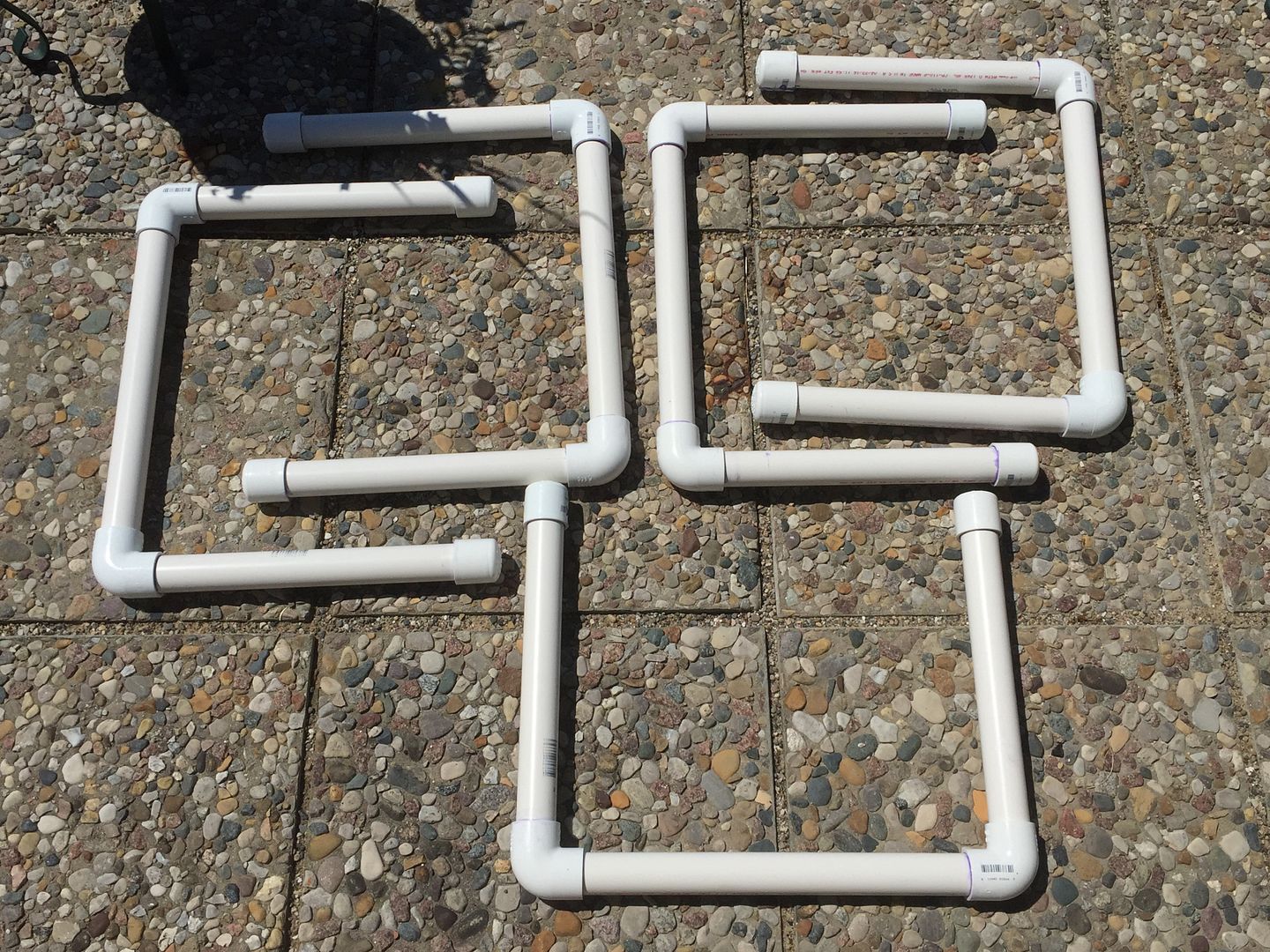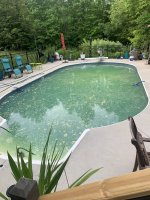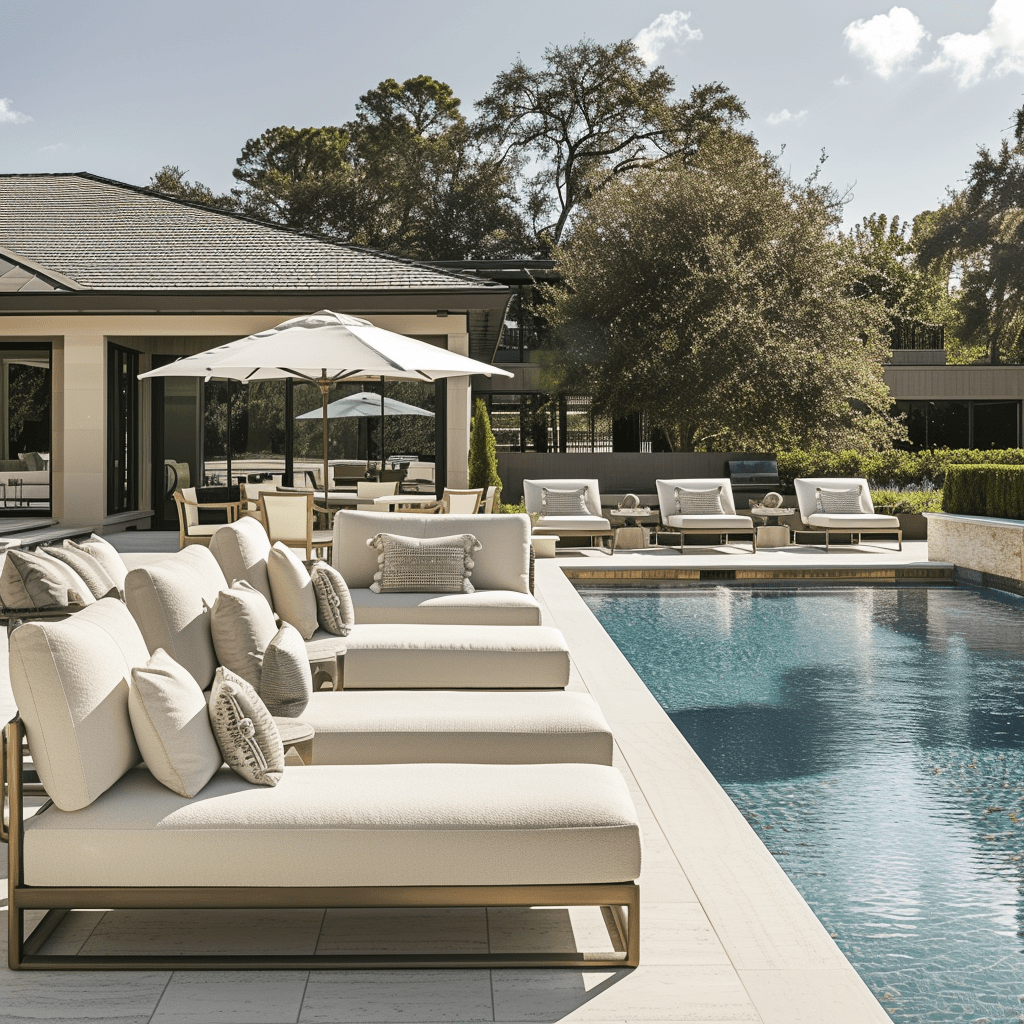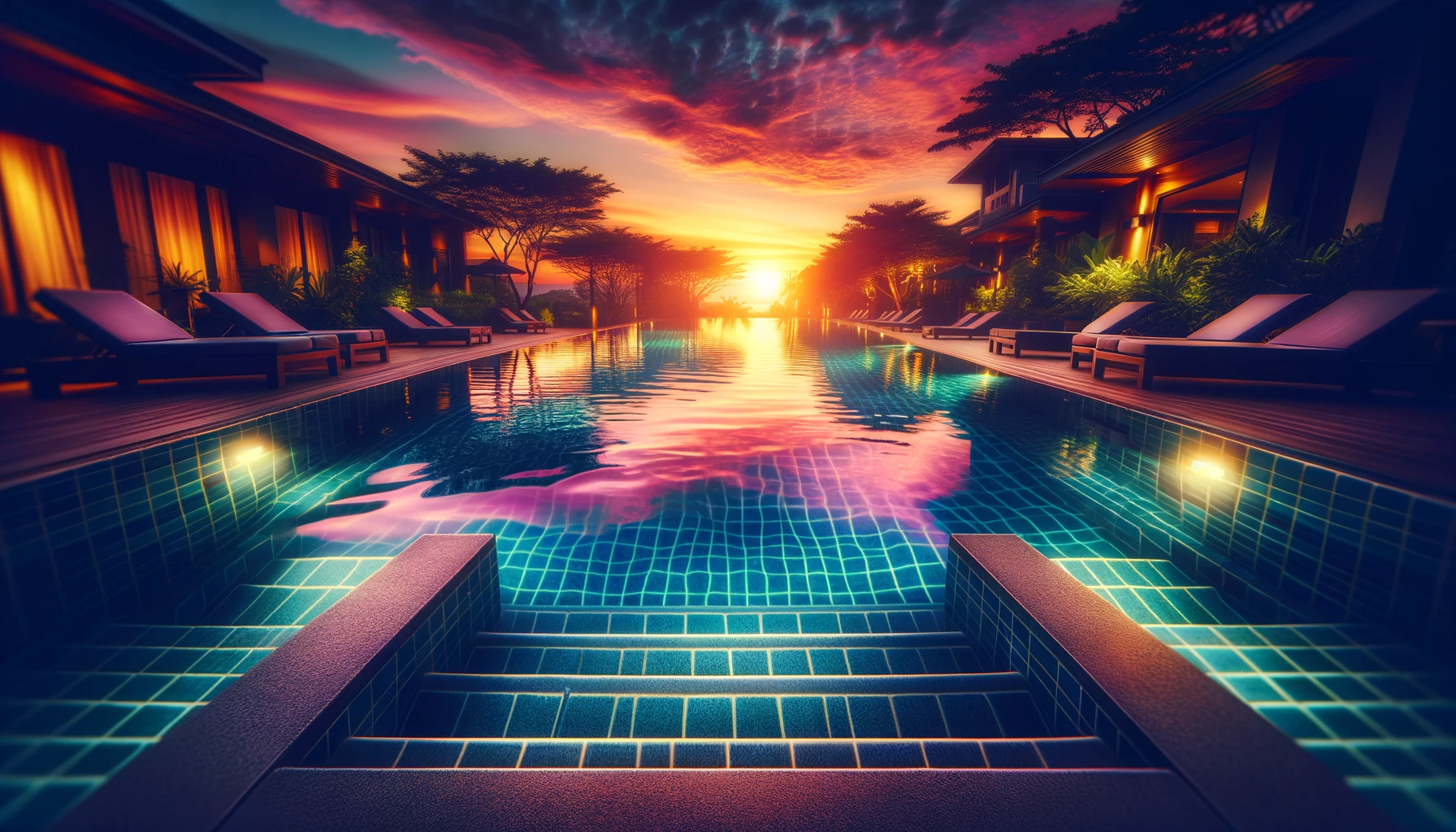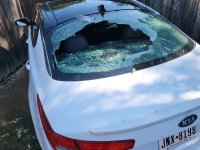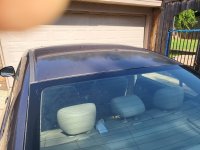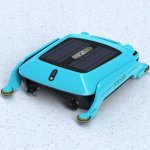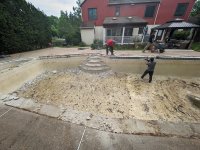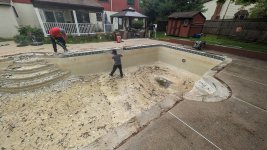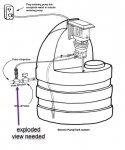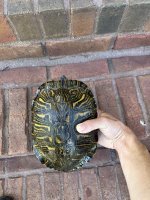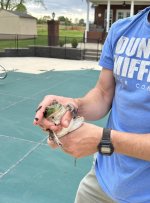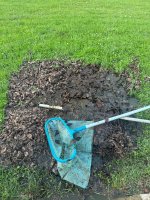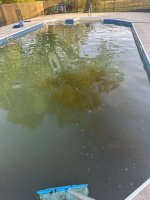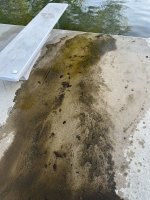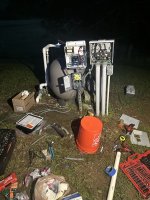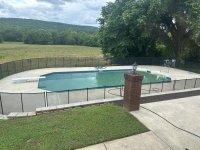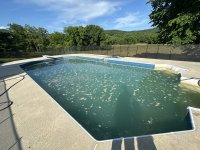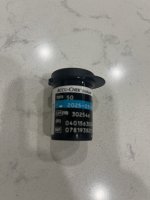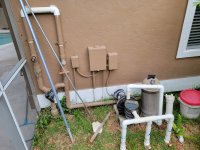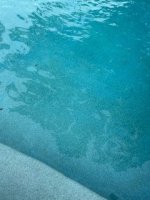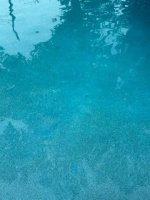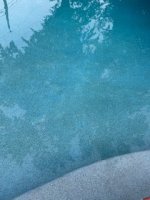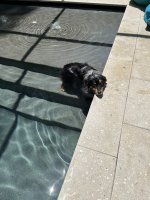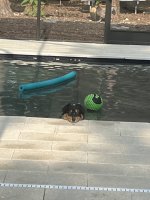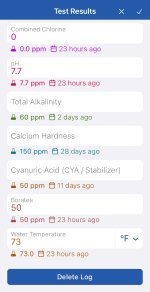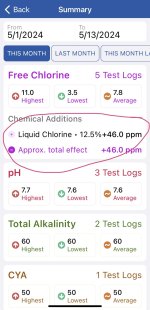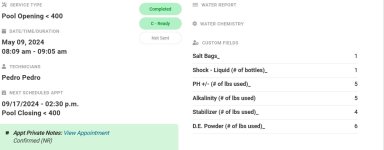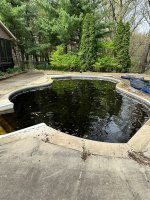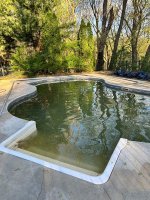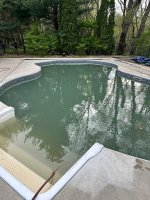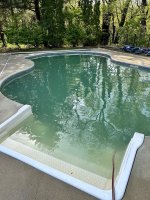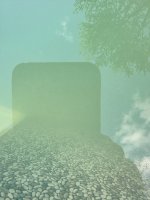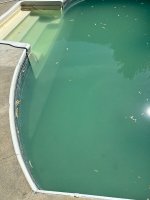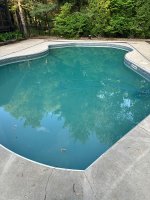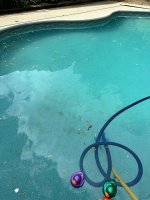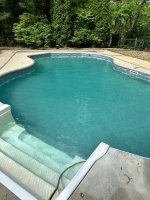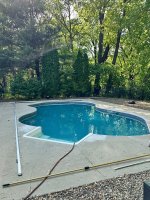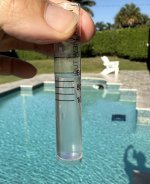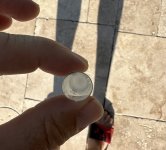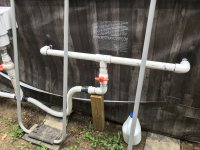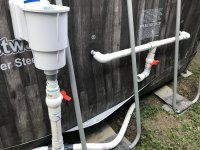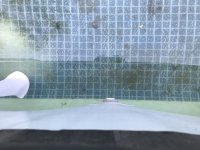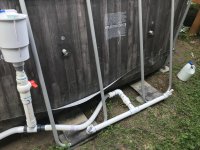Note: For a condensed version of this article, please read the SLAM Process in pool school.
Turning Your Green Swamp Back into a Sparkling Oasis
Did you take the cover off in the spring, or just come back from a vacation, and discover a green swamp where your pool used to be? Getting rid of algae is a chore that even the most experienced of us have to face sometimes. With proper preparation, some concentrated attention for a couple of days, and then a few minutes a day of follow up, you can turn your pool back into the sparkling oasis you remember.
This guide is written for people who have a serious green algae problem, murky green water that has been that way for days or months or years in an outdoor pool. While many of the same principles apply to other kinds of algae, brand new green algae outbreaks, and indoor pools, there are differences in those situations which I won't be going into here.
Background
There are two crucial things to understand about getting rid of algae. First, algae is constantly growing. If you pause before you have gotten rid of it all, it will bounce right back, and any time and chemicals you invested will be wasted. Fighting algae is a race: you need to kill the algae faster than it grows back. If you give algae a few hours without chlorine it will be growing back and you will be losing ground. To get rid of algae reliably on the first attempt, you need to hit it hard and follow up carefully to be sure you got it all.
Second, the free chlorine (FC) level you need to target depends on your stabilizer (CYA) level. The higher the CYA level the more free chlorine it is going to take. If you don't have any idea of your CYA level, you risk either not using enough chlorine (thus failing to get rid of the algae) or using too much chlorine(potentially causing corrosion in all metal parts or shortening the life of your liner).
Be Prepared
There are several things you need to be sure of before you start the
SLAM Process.
First, the pump and filter need to be working. You need to have the pump running 24/7 during the entire process to make sure the chlorine gets everywhere, or you might not get all of the algae. Before you start, be sure you know how to clean/backwash the filter, and what the filter's pressure reading is when the filter is clean.
Second, you need to know your CYA level. If you just got back from vacation you should know what the CYA level was before you left. If the pool has been closed over the winter (or longer), the CYA may have vanished over the winter and you will need to test it. If the water is cold you should allow it to warm up to room temperature before testing CYA. In any case, don't depend on a CYA test done while you have algae, it should be verified after the algae is gone.
It is important that the CYA level not be zero during the SLAM process. If CYA is too low, you will lose too much chlorine to sunlight, and the algae will be able to get ahead of you. If your FC and CYA are both zero, especially if CYA was not zero previously, there is a chance that ammonia could be present in the pool. A quick check is to add 10ppm of FC to the pool and retest the FC and CC level after 10 minutes. If FC drops below 7ppm and/or the CC rises to more than 2ppm, ammonia is likely present. Dose the FC back up to 10ppm and repeat until the CC level drops and the FC level is nearly maintained. Once this occurs, you know that there is no ammonia in the water.
If your CYA level is below 30 you should add CYA/stabilizer to around 30 ppm by putting it in a sock in the skimmer or hanging in front of a return jet and massaging often to encourage it to dissolve (or you can use dichlor if you have some on hand and know what you are doing). Once the CYA is out of the sock, it should show up on the test accurately within a day or so. Don't pour CYA directly into the skimmer, since you will be cleaning/backwashing the filter, and any undissolved CYA will be wasted, as it can take CYA up to a week to dissolve when added in this manner. Remember to retest CYA and adjust as needed once the algae is gone.
It is also important that the CYA level not be too high. If CYA is too high cleaning up the pool will take really huge amounts of chlorine and quickly becomes impractical. If a reliable test shows that your CYA level is above 90 you should replace water to bring the CYA level down to 90 or lower before continuing.
Once you know your CYA level, look up the corresponding FC shock level that will be used in the SLAM process. You can use
PoolMath to do this. Enter your CYA level in the Now column and then look at the blue Suggested FC Levels section towards the bottom. Or, you can use the
FC/CYA Chart in Pool School.
Third, you must have a FAS-DPD chlorine test kit. The FAS-DPD test is able to measure FC and CC up to very high levels. You need that in order to be certain that you got all of the algae. The
Recommended Test Kits, (TF Test Kits TF100, Taylor K-2006 kit, and Leslie's Chlorine FAS-DPD Service Test Kit) all contain the FAS-DPD chlorine test. TFTestKits, Taylor, and a few others also sell the FAS-DPD test separately. While it is possible to fight algae without this test, it involves a lot of guess work and extra chlorine.
Fourth, you need to have enough chlorine on hand, lest you end up running out to the store to buy more every half hour. I strongly recommend bleach, but cal-hypo, dichlor, and lith-hypo can all be used if you are aware of their down sides. (Remember, you will be using a lot of chlorine, so the negatives of dichlor, cal-hypo, and lith-hypo can be quite significant.) At a minimum, I would suggest having four times the amount needed to bring your pool to shock level. The longer it has been since the pool was clear the more chlorine you may need, so plan accordingly. You can use
PoolMath to calculate the amount that corresponds to shock level for your pool.
Fifth, adjust the pH to between 7.2 and 7.4 before you start. The pH test is not reliable at high FC levels (when FC > 10ppm), and the pH often goes up, so start it off a little on the low side. The FC level is going to be high for several days, so you need to get the pH right before you start.
If the pool has been sitting unattended for longer than one winter you should also spend some time in advance pulling everything solid you can get hold of out of the water. Using a skimmer net on a pole you should be able to fish out most of what is in the water, even if you can't see what you are doing.
If you regularly have issues with metals, or have recently used a copper based algaecide, or regularly use a ionizer/mineral system you need to take additional precautions to avoid metal stains. While SLAMing the pool, the pH will temporarily go up more than it might usually, which can cause any metals in the water to deposit as stain the pool surface. If you suspect there may be problems with metals, you should lower the pH down very close to 7.0 before starting and add some sequestrant to prevent metal staining.
If you have a SWG, chlorine tablet dispenser, or Liquidator, you will still need to use another chlorine source for killing off the algae. All of those devices are designed to add chlorine slowly and steadily over many hours. To kill algae, you need to put lots and lots of chlorine in all at once. The SWG, tablet dispenser, or Liquidator can be helpful in the follow up stages to maintain shock level, but for the initial couple of chlorine applications you need to use another chlorine source. Generally, we recommend turning these systems off so that you have a feel for the chlorine consumption and the progress of the SLAM process.
Hit Hard
Begin your efforts when you have as much time as possible, preferably several hours in a row, to work on the pool. You will also need time to follow up at least twice a day for the next several days. The more concentrated time you can spend, the quicker the entire process will go. Set the pump timer/pool automation system to run the pump continuously, and leave it running 24/7 until the water is completely clear. Now you are ready to start killing the algae.
The general process is: Add enough chlorine to bring the pool up to shock level. Wait half an hour. Then test the FC level, and add enough chlorine to bring the FC back up to shock level. Repeat this cycle: test, add chlorine, wait, as many times as you have time for, or until the FC level remains nearly at shock level after a one hour wait.
You always test the FC level and only add as much chlorine as needed to bring it back up to shock level.
PoolMath is very handy for this since you can enter your pool size, the test result in the Now column, and shock level in the Goal column, and it will tell you how much bleach to add. The first few times the FC level is likely to be either zero or quite low. Once the FC level is still a substantial fraction of shock level after half an hour, you can switch to waiting one hour between tests.
During the first half hour wait, get a skimmer net and remove everything solid that you can from the pool. If the algae has only been growing for a couple of days that might not be very much, but if the pool has been closed for a while there may be lots of leaves and other debris in there. Be as thorough as you can, given that you probably won't be able to see what you are doing.
Once the green starts to fade you should brush the entire pool. It is important to brush everywhere while the FC level is high. That means ladders and steps as well as the entire pool surface. Algae can survive high chlorine levels if it has formed a biofilm on a surface. By brushing, you disrupt the biofilm and expose the algae to the chlorine. Continue brushing once a day until the algae is all dead.
After several cycles, possibly quite a few cycles if the pool has had algae for a very long time, the FC level will be falling only slightly after an hour's wait. At that point, you can bring the pool back up to shock level one last time, and then move on to the follow up stage. If you are doing all this in the morning, and the CYA level is below 60, you should check the FC level one more time in the mid afternoon and bring it back up to shock level if needed.
Follow Up
To make sure you got all of the algae, it is important to
maintain the pool at shock level until testing shows that all the algae is gone. Continue testing the water at least twice a day (morning and evening) and bringing it back up to shock level if needed. Algae can be hiding in obscure places, like lighting niches or under a ladder or in the plumbing. Continued high FC levels will kill all of the algae eventually. It is also important to brush the entire pool once a day until the algae is completely gone.
To see if you got all of the algae, measure the FC level after sunset and then measure it again very early in the morning, this is called the
Overnight Chlorine Loss Test (OCLT). If the FC remained stable (within 1.0ppm of the same reading) overnight, and the CC level is 0.5 or lower then all of the algae is gone.
Once most of the algae is dead, the water will turn milky or gray instead of green. It can still take the filter up to a week to clear the water from this point. A sand filter is the slowest to clear up the pool, while a DE filter can often do it in a couple of days.
While that is happening, you should keep an eye on the filter pressure and backwash/clean the filter any time the pressure goes up by 20-25% over your clean pressure. DE filters will often need to be backwashed a couple of times a day for the first day or two. Sand and cartridge filters will usually last a couple of days between cleanings. If in doubt, clean/backwash the filter extra times rather than risk letting it get clogged up. If your filter pressure is rising quickly and you are not able to backwash as needed, switching to the Recirculate mode, if available, on your filter's multi-port valve can keep the water moving until you able to properly monitor your filter. Do not run through a solar panel system on Recirculate or you could clog the tubes. If you have a SWG, check that the cell also does not clog up with debris when running on Recirculate, remove the cell if possible.
If you have a sand filter and are not seeing daily improvement in the water clarity, it may be a good idea to inspect your sand and
Deep Clean your Sand Filter to ensure it is operating correctly. You can also
Add DE to a Sand Filter to help it more quickly clear up the pool.
If you are in a huge hurry, and have a sand or DE filter, it is possible to do a floc treatment to clean up the dead algae after the FC level holds steady overnight. Flock treatments can often clean up the water overnight, but TFP does not recommend them. They are an additional effort and expense, they don't always work completely, and they increase the risk that the algae will come back.
Getting algae is a pain but sometimes unavoidable. Every pool and every situation is a little different. If there is something I didn't cover, or you have questions, or things don't go exactly the way I described, feel free to start a new topic in the
Algae - Prevention and Treatment section and get advice tailored to your specific situation. If you are properly prepared, hit hard, and follow up thoroughly, you can have the pool cleaned up in under a week and be back to enjoying your sparkling oasis!
Major update on 10 June 2016 by jblizzle
